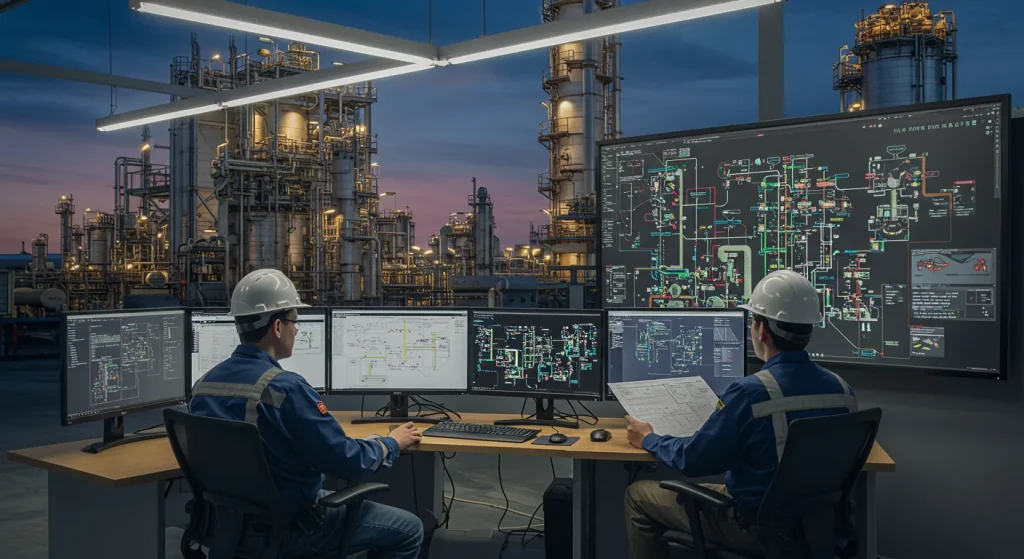
## Well Testing Equipment: Unveiling the Secrets Beneath the Surface
Well testing is a crucial process in the lifecycle of an oil or gas well, providing invaluable data that informs critical decisions about reservoir management, production optimization, and ultimately, profitability. This process relies heavily on specialized equipment designed to accurately measure and analyze the fluids and pressures flowing from the well. Understanding the purpose and function of these tools is essential for anyone involved in the oil and gas industry.
**Why is Well Testing So Important?**
Imagine trying to manage a bank account without knowing the balance or the flow of funds. That’s essentially what reservoir management would be without well testing. It allows operators to:
* **Determine Reservoir Properties:** Well testing provides insights into permeability, reservoir pressure, and fluid composition, enabling accurate reservoir modeling and forecasting.
* **Optimize Production:** By analyzing flow rates and pressure responses, operators can identify potential bottlenecks, optimize well performance, and maximize production.
* **Evaluate Well Integrity:** Well testing can identify issues like leaks, damaged casings, or communication between different reservoir zones.
* **Comply with Regulations:** Many regulatory bodies require well testing to ensure safe and environmentally responsible operations.
**The Arsenal of Well Testing Equipment:**
The specific equipment used in well testing varies depending on the well type, location, and objectives. However, some core components are consistently utilized:
* **Surface Well Testing Equipment:** This is the most visible part of the operation, located at the wellhead and responsible for handling, separating, and measuring the produced fluids. Key components include:
* **Wellhead Choke Manifold:** Controls the flow rate and pressure of the well stream.
* **Separator:** Separates the well stream into its constituent phases: oil, gas, and water. Common types include two-phase (gas and liquid) and three-phase (gas, oil, and water) separators.
* **Metering Equipment:** Accurately measures the flow rates of each separated phase. This includes gas flow meters (orifice meters, turbine meters, ultrasonic meters), liquid flow meters (positive displacement meters, turbine meters, Coriolis meters), and water cut meters.
* **Sampling Equipment:** Allows for the collection of representative fluid samples for laboratory analysis.
* **Burner Boom (or Flare Stack):** Safely disposes of produced gas through combustion, especially in the early stages of testing.
* **Data Acquisition System (DAS):** Collects, processes, and displays data from all the sensors and meters, providing a comprehensive overview of the well’s performance.
* **Downhole Well Testing Equipment:** Placed inside the wellbore to measure pressure and temperature at various depths. This equipment provides valuable insights into reservoir behavior. Key components include:
* **Downhole Gauges:** Highly accurate pressure and temperature sensors placed within the wellbore. These gauges can be deployed on wireline, slickline, or coiled tubing.
* **Packers:** Inflatable or mechanical devices used to isolate specific zones within the wellbore, allowing for selective testing of individual formations.
* **Downhole Shut-in Tools:** Allows for the controlled shut-in of the well downhole, providing more accurate pressure buildup data.
* **DST (Drill Stem Testing) Tools:** A suite of tools used during drilling to perform formation testing before the well is completed. They include packers, valves, and recorders to isolate and test a specific zone.
**Technological Advancements in Well Testing:**
The field of well testing is constantly evolving with technological advancements leading to more accurate, efficient, and safer operations. Some notable trends include:
* **Real-time Data Monitoring:** Advanced data acquisition systems and telemetry allow for real-time monitoring of well testing operations from remote locations, enabling faster decision-making and improved safety.
* **Multiphase Flow Meters:** These advanced meters can accurately measure the flow rates of oil, gas, and water without requiring separation, simplifying the testing process and reducing equipment footprint.
* **Permanent Downhole Gauges:** Permanently installed downhole gauges provide continuous monitoring of reservoir pressure and temperature, enabling proactive reservoir management.
* **Automated Well Testing Systems:** Automated systems reduce human intervention, minimizing errors and improving efficiency.
* **Wireless Downhole Gauges:** Eliminating the need for wireline or slickline deployment, wireless gauges offer greater flexibility and cost-effectiveness.
**Conclusion:**
Well testing equipment is the backbone of reservoir characterization and production optimization in the oil and gas industry. By accurately measuring and analyzing the fluids and pressures flowing from the well, these tools provide invaluable data that guides critical decisions. As technology continues to advance, well testing will become even more precise, efficient, and environmentally responsible, ensuring the sustainable production of oil and gas resources for years to come. Understanding the capabilities and limitations of well testing equipment is crucial for professionals in the industry to make informed decisions and optimize the performance of their wells.